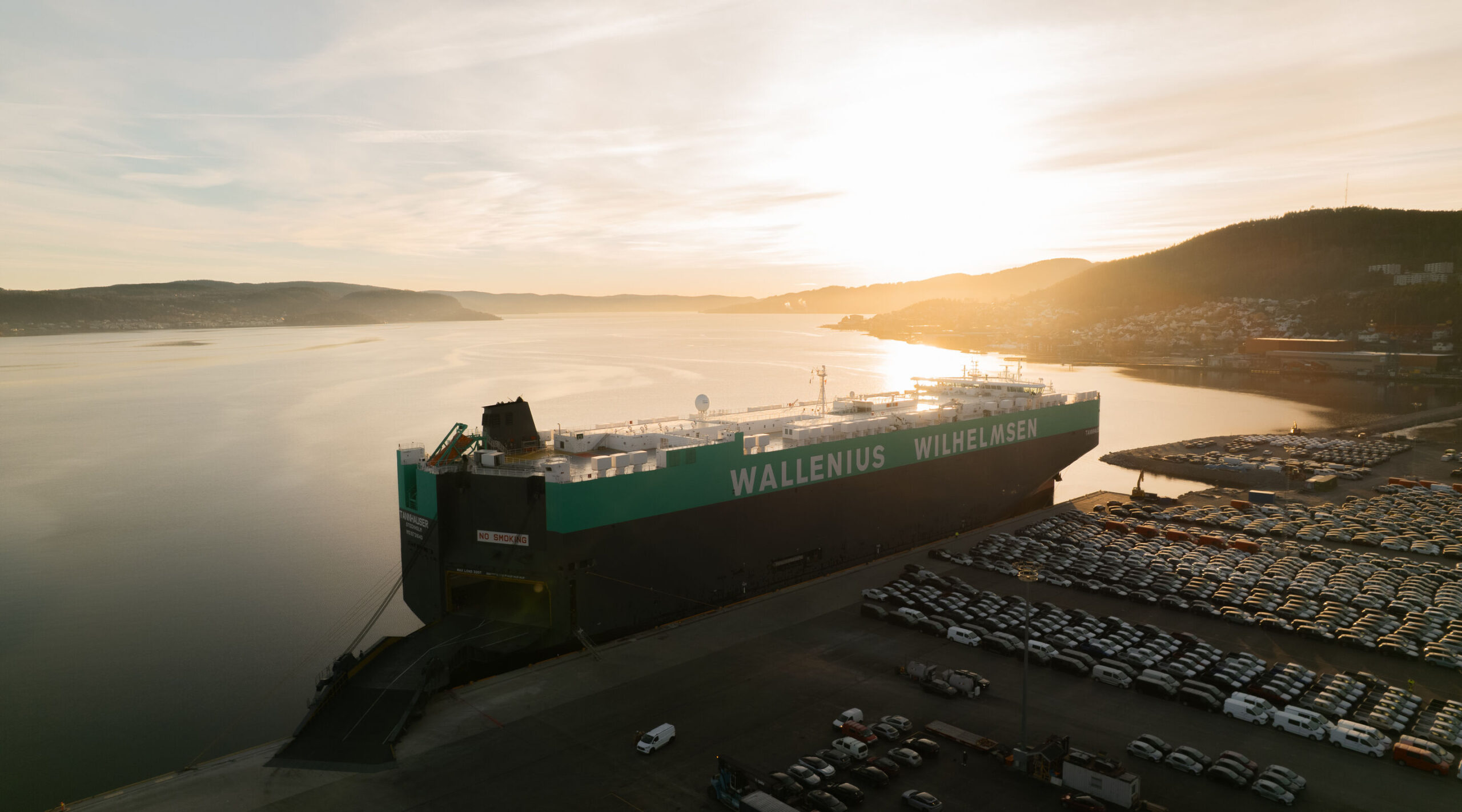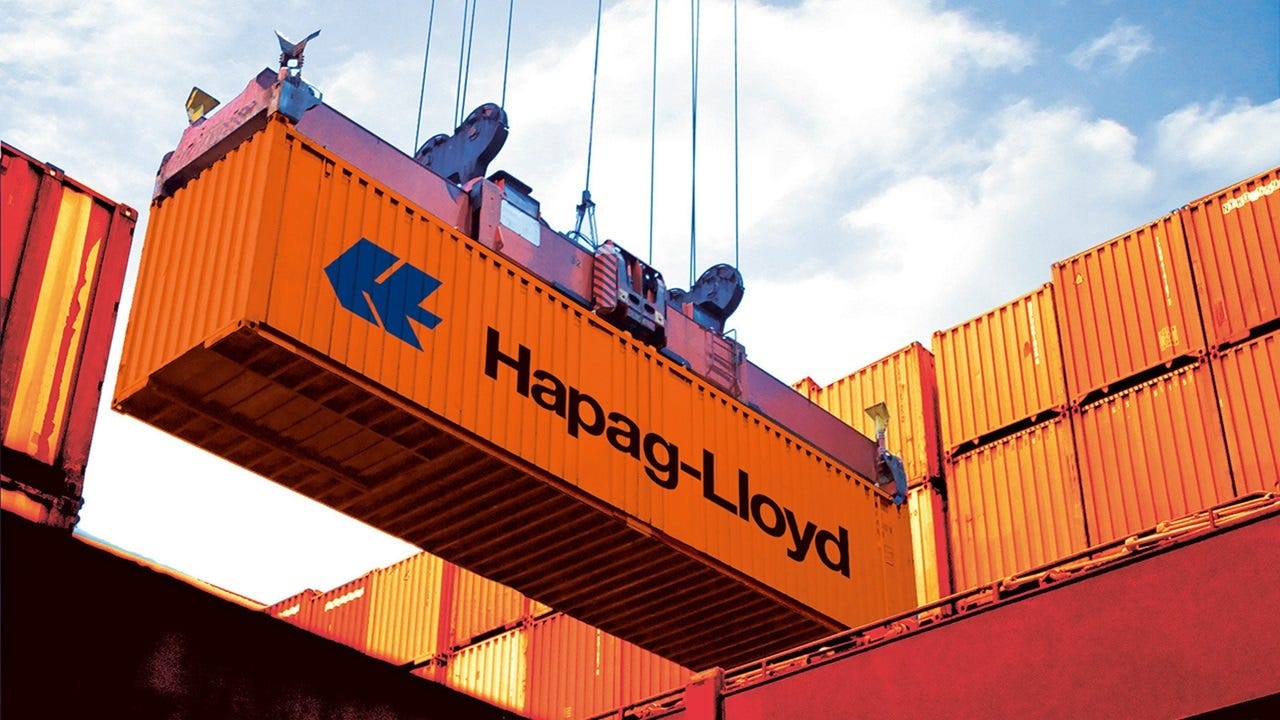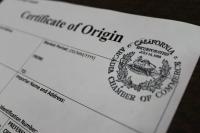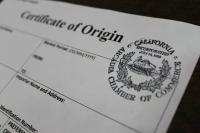BILL OF LADING IN SHIPPING: IMPORTANCE, PURPOSE, AND TYPES
If we search the meaning of the term “bill”, it is defined as a printed or written statement of the cost for the goods or services delivered or to be delivered. The term “ lade” means to put the cargo onto a ship or other form of goods carrier.
Bill Of Lading in Shipping: Importance, Purpose, And Types
If we search the meaning of the term “bill”, it is defined as a printed or written statement of the cost for the goods or services delivered or to be delivered. The term “ lade” means to put the cargo onto a ship or other form of goods carrier.
Thus, a bill of lading in shipping is a record of the traded goods which have been received on board. It is a document that establishes an agreement between a shipper and a transportation company for the transportation of goods. Transportation Company (carrier) issues these records to the shipper.
A bill of lading indicates a particular carrier through which the goods have been placed to their final destination and the conditions for transporting the shipment to its final destination. Land, ocean and air are the means used for bills of lading.
The Importance of Bills of Lading
The carrier need not require all originals to be submitted before delivery. It is therefore essential that the exporter retains control over the full set of the originals until payment is effected or a bill of exchange is accepted or some other assurance for payment has been made to him.
A bill of lading, therefore, is a very important issue when making shipments to move the cargo or freight from one point to the other. On one hand, it is a contract between a carrier and shipper for the transportation of goods and on the other hand, it serves as a receipt issued by a carrier to the shipper.
Hence, the bill of lading is considered a legal document which provides all the vital details to the shipper and the carrier to conveniently process the freight shipment through different maritime countries and invoice it correctly.
The original copy of the bill of lading is provided to the carrier, and a copy of the same should also be ascribed to the packaged freight.
Negotiable and Non-negotiable bill of lading?
Negotiable bill of lading: In this type of bill, clear instruction is provided to make the delivery of the goods to anyone having the possession of the original copy of the bill, which itself signifies the title and control of the freight. In this type of bill, the buyer/ receiver or his/her agent has to acquire and present an original copy of the bill of lading at the discharge port. In the absence of original bill copy, the freight will not be released.
Non-negotiable bill: This type of bill of lading fixes a specific consignee/name of the receiver to whom the freights will be shipped and delivered. It, however, does not itself serve the ownership of the goods. Under this type of bill, the assigned receiver/ buyers can claim the cargo by confirming their identity.
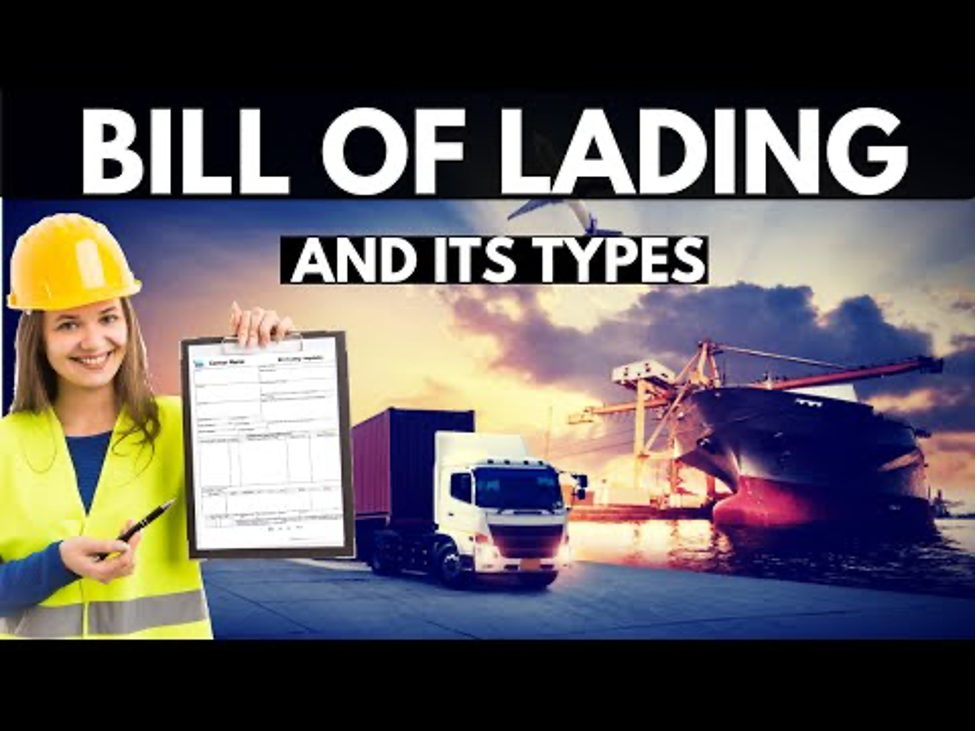
Purpose of Bill of Lading:
The bill of lading document is meant to act as a transport document enacting as the evidence of the contract of carriage of the goods. A negotiable bill of lading has the following legal qualities:
- It acts as a piece of evidence for the carriage contract containing the terms and condition under which the goods transportation will be carried out
- It represents as a receipt which endorses that the carrier has received the cargo as per the contract and the goods are received in good condition.
- It is a document of title, permitting the sale of goods in transit and the raising of financial credit.
- Most of the local and international system does not consider a bill of lading as a document of title. It provides the right for the delivery to be made to the possessor
Types of Bill of Lading
The bill of lading can be classified on the basis of “how it is executed” and “Method of operation”-
On the basis of execution:
1. Straight bill of lading reveals that the goods are consigned to a specified person and it is not negotiable free from existing equities. It means any endorsee acquires no better rights than those held by the endorser. This type of bill is also known as a non-negotiable bill of lading, and from the banker’s point of view, this type of bill of lading is not safe. This type of bill is prominently used for military cargo.
2. Open bill of lading – This is a negotiable bill of lading where the name of Consignee can be changed with consignees’ signature and thus transferred. This can be transferred multiple times. Switch bill of lading is a type of open bill of lading.
3. Bearer bill of lading is a bill that states that delivery shall be made to whosoever holds the bill. Such bill may be created explicitly or it is an order bill that fails to nominate the consignee whether in its original form or through an endorsement in blank. A bearer bill can be negotiated by physical delivery. They are used for bulk cargo that is turned over in small amounts.
4. Order bill of lading is the bill uses express words to make the bill negotiable. This means that delivery is to be made to the further order of the consignee using words such as “delivery to A Ltd. or to order or assigns. The cargo is only delivered to the bonafide holder of the bill of lading, and it has to be verified by an agent who issues delivery order and the verified bill of lading. The order bill of lading:
– is the most modern type bill which is widely used all over the world
– ensures the safety of delivery of cargo to a bonafide holder of B/L
– Since the ship visits several foreign ports where the language, practice, procedures may be different the master might be inconvenienced during the delivery of the cargo. People might fraudulently collect the cargo.
– To overcome this difficulty and avoid future cargo claims and litigations, the consignee or the holder is required to surrender the bill of lading to the ship’s agent at the discharge port who will verify the genuineness of the bill of lading. When satisfied the agent will issue a delivery order and the verified bill of lading. Now any person can collect the cargo from the ship by surrendering the bill of lading and the delivery note to the ship.
As the bill of lading is made to “to order” of the consignee, it is a negotiable instrument of title. This means that the ownership of the bill of lading can be transferred from one person to another by authorising signature and delivery of the bill of lading.
All goods which have not been paid in advance and are shipped under “To order” of the bill of lading can be categorised into two types:
- To Order, Blank Endorsed: not consigned to any named party but ‘To Order’ of the consignor, with the intended – consignee’s name given under ‘notify party.’ The consignor must stamp and sign (endorse) this B/L so that its title can be transferred.
- To Order, Bank: consigned to a bank with the intended consignee’s name given under ‘notify party.’ The bank endorses the B/L to the intended consignee against payment of (or a pledge to pay) the amount of the accompanying bill of exchange. ‘To Order’ B/Ls are used commonly in the letter of credit transactions and may be bought, sold, or traded, or used as security for borrowing money from banks or other lenders.
ON the basis of Method of Operation:
1. Received for shipment bill of lading–This bill is sent from agent /charterer to shipper. The endorsement of this bill ensures that the carrier has received goods but does not confirm it is onboard of the assigned vessel
2. Shipped B/L – This bill of lading is Issued when cargo is loaded on board. It binds the shipowner and the shipper directly
3. A clean bill of lading is one which states that the cargo has been loaded on board the ship in apparent good order and condition. Such a bill of lading will not bear a clause or notation which expressively declares a defective condition of goods and/or the packaging. The opposite term is a soiled bill of lading. It reflects that the goods were received by the carrier in anything but good condition.
4. Through B/L – This bill of lading is a legal document that allows for direct delivery of cargo from point A to point B. The bill allows transportation of goods both within domestic borders and through international shipment as it serves as a receipt of the cargo, a contract of carriage, and sometimes title for the products as well
5. Combined transport B/L – This bill gives information about cargo being transported in large containers by sea and land, i.e. through multi-model transport
6. Dirty bill of lading: If the shipowner raises an objection about “the condition of the cargo is in good order”, he/she can include a clause thereby causing the bill of lading to be “claused or dirty” along with the remarks as per the finding of the cargo condition. E.g. torn packing, broken cargo, shortage in the quantity of the goods etc.
Sets of Bill of Lading:
This is an old practice where the bills are signed in the sets of three originals to facilitate the goods are timely delivered even when the original is lost. They are stated as the first original, second original, third original on top of the bill. A duplicate copy with a stamp – “Non-negotiable” may also be distributed.
The master will sign the original bill of lading, and when the master of agent signs the three-bill of lading, all other copies are considered void. This clause is clearly written on the bill of lading which is supplied in sets.
This is a reason why the bank, negotiating a letter of credit that covers the cargo, will always ask for the full set of B/Ls. This is to prevent other B/L holders from legally claiming the cargo before the bank does.
Bill of lading as Contract Of Carriage:
The contract between the carrier and the shipper is already created before issuing the bill of lading when the cargo is loaded on the ship. This is done to safeguard the shipper in case the cargo is damaged before loading it on board the vessel and to help the shipper in the claim process. For the carrier and the consignee, the bill of lading will act as the actual contract of carriage.
The popularly used conventions and rules which covers the contract of carriage for carrying goods by sea :
– Hamburg Rules
– Hague Rules
– US COGSA
The convention which governs the contract of the carriage is usually stated in the first page of the bill of lading. Upon booking space for shipment by the consignee the carrier sends a booking confirmation which states Clauses sent by the carrier, it will indicate the terms and conditions that will govern the booking and contract of carriage.
Contents of Freight Bill of Lading:
The bill of lading comprises of the following details:
- The complete name and official address of the receiver and the shipper.
- The Purchase orders or special reference/ invoice numbers which helps the shipper and the consignee to release the goods for pickup or accepted at delivery
- The date of the pickup which acts as a reference to track the freight
- The details of the item including the number of unit being shipper, weight and dimension of the product, along with the nature of the cargo being carried, i.e. dangerous goods etc.
- If the goods are hazardous, Department of Transportation hazardous material designation is tagged, and it is cited on the bill to follow special rules and requirements when shipping
- The details of the packaging used such as crates, palates, cartons, pills, drums etc.
- Any special notes or instruction for the carrier
Bill of Lading Tracking:
Different companies use different forms of bill of lading which makes it difficult to track them unless a specific tracking service is provided by the carrier. There are few companies which tie-up with the shipping carriers to track the bill of lading for easy trade.
However, these precautions must be taken before signing the bill of lading.
Electronic Bill of Lading:
With the modernisation of the shipping industry as a whole, the bill of lading is also modernised to the electronic bill of lading to solve the issues occurring while using a paper bill of lading under the latest iteration of International Group of P&I Clubs. The problem faced when using a paper bill of ladings are:
– The paper bill uses printed bills of lading which are both costly. The bill has to be couriered which is an additional cost
– The slow movement of the paper-based bill of lading.
– Carriers are obligated to release the goods only on the production of an original bill of lading, which if not received in time will slow the process.
– The paper bill can be forged, and delivery of goods against a forged bill of lading will lead to a huge loss

Advantages of Electronic Bill of Lading:
- As there are no papers involved, it saves paper cost as well the cost involved in sending the paper to a different destination by courier
- The electronic bill of lading can be transmitted instantaneously around the word in the presence of an internet connection, enabling a quick trade and ease of multiple transfers of ownership during the carriage of the cargo.
- If there are any modifications required in the bill, it can be made quickly and cost-effectively as compared to the paper system of the bill of lading.
- If the electronic bill of lading system is drawn correctly, such as introducing audit trials, PIN, electronic signature etc., it will be difficult to commit any type of fraud.
Problems with the Electronic Bill of Lading
It is possible to negotiate and transfer the possession of the paper bill as it is the evidence of title of the goods. However, this is not automatically the case with e-bill.
(Source – A paper bill of lading is a document of title, enabling it to be negotiated and transferred as possession of the bill is evidence of title to the goods. This is not automatically the case at law with an e-bill)
If the electronic bill system is not secured, it can be hacked, and the details can be manipulated as per the convenience of the hacker, leading to fraud and loss of cargo
Implementation of electronic bill system across the industry needs consent from all the stakeholder, which will take time.
Source: marineinsight.com by Raunek Kantharia

